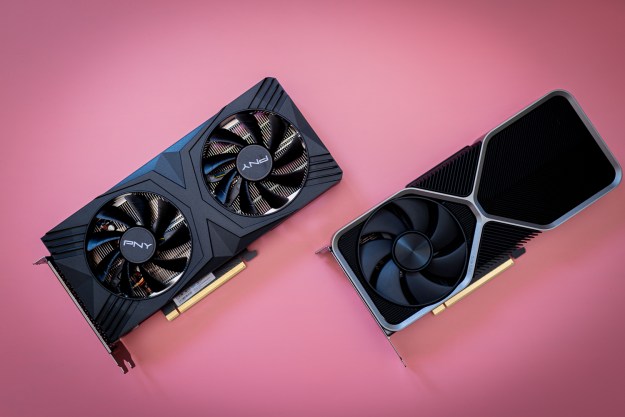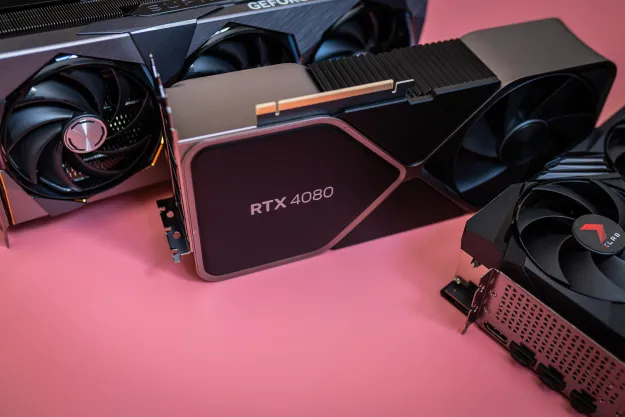Contained within the data that was stolen from the Nvidia hack is reportedly the algorithm behind the company’s crypto mining limiter for its GPUs. The hackers who orchestrated the cyber breach itself are now attempting to sell a tool based on the blueprint for a hefty fee.
LAPSUS$, which is said to be a South American hacking group, posted a new message on its Telegram channel where it’s been providing any developments surrounding the hack. Embedded in the latest update is an offer to buy the tool it claims to be in possession of for a flat $1 million.

Cashing in on crypto
The software, if it is indeed real, would effectively remove all existing mining limiters for several Nvidia GeForce RTX 30-series graphics cards. In 2021, Nvidia implemented a Lite Hash Rate (LHR) limiter that would limit Ethereum mining performance for crypto enthusiasts.
As reported by PCMag, the aforementioned tool is apparently capable of circumventing these limiters without the requirement of flashing or updating the firmware for any qualifying RTX 30-series GPU. Previously, the group stated, “Without flashing = big money for any miner developer.”
When the cyber security incident was initially revealed, LAPSUS$ stressed it wants to “help [the] mining and gaming [communities].” It demanded Nvidia release firmware for all 30-series GPUs that would remove the LHR limitations. If their request was not fulfilled, the group threatened to leak the “hw” folder in its entirety.
We learned more about said folder yesterday when LAPSUS$ alleged that sitting within its 1TB data heist is a 250GB hardware folder. It will be released tomorrow if Nvidia doesn’t make its GPU drivers completely open-source “from now on and forever.”
In any case, in regard to the LHR V2 bypass tool, $1 million is a steep asking price for a program that’s unlikely to generate any meaningful profit due to the current state of the crypto market; prices have been dropping for the most popular coins.
You’d be correct to assume a tool that unlocks full mining performance could be valuable as you’ll naturally be able to mine much more than what’s currently allowed by Nvidia. However, alongside other workarounds that have existed for a while, ETH mining will not be possible anymore once the Proof of Stake mechanism launches. It just doesn’t make sense to pay a fortune for something that will be rendered null in the near future.
All things considered, though, the astronomical price tag would serve as somewhat of an improvement over receiving malware instead.
Still, LAPSUS$’s hack has led to the release of other sensitive data that will undoubtedly have a ripple effect in the technology industry moving forward. Firstly, Team Green’s industry-leading DLSS source code has reportedly been made available for download, which could prove to have severe implications within the resolution scaling market.
Furthermore, purported confirmation of Nvidia’s next-gen GPU plans was also shared online, which seemingly resulted in some interesting information pertaining to these powerful 40-series cards materializing.
Memory bus details leaked
Elsewhere, another leak has provided further insight into Nvidia’s GeForce Ada Lovelace architecture. For reference, Ada has been reported to be the follow-up to the current Ampere line. Specifically, the memory bus widths for the upcoming RTX 40-series GPUs have been detailed.

As reported by TechPowerUp, the flagship AD102 silicon will purportedly sport a 384-bit wide memory bus. Meanwhile, AD103 silicon is said to feature a 256-bit wide memory bus.
Notably, AD104 will apparently come with a 192-bit wide memory bus. TechPowerUp stresses that this particular discovery shouldn’t be understated as it serves as the successor to numerous Nvidia GPUs that come with 256-bit memory buses (such as the GA104, TU104, GP104, GM204, and more).
Effectively, the chipmaker appears to have decided to decrease memory bus widths belonging to less powerful silicon in order to decrease board costs, “and compensate for the narrower bus-width with large on-die caches, high memory data-rates, and other memory-management optimizations.” Team Green’s chief rival, AMD, is said to be following this same route as well for its own silicon.
Finally, according to the leak, AD106 will offer a 128-bit wide bus. Comparatively, its predecessors, the GA106 and TU106, both feature a 192-bit wide bus. As for the chip maker’s AD107 chip, the smallest in its range of silicon, it won’t be subjected to a downgrade, but rather retain its 128-bit bus width.
The technology community now eagerly awaits the next round of leaks that will inevitably emerge tomorrow. The entire file set for Nvidia’s silicon, graphics, and computer chipsets related to its recent GPUs, “including the RTX 3090 Ti and upcoming revisions,” could very well be revealed on Friday.
Nvidia is the leading supplier of video cards, generating billions in revenue for the company. The consequences for such sensitive information being released could be considerably damaging for one of the most valuable technology firms in the world (Nvidia is worth more than $600 billion).
“Not [making] the drivers open source, making us release the entire silicon chip files so that everyone not only knows your drivers’ secrets, but also your most closely-guarded trade secrets for graphics and computer chipsets too,” the group asserted.
Editors' Recommendations
- You shouldn’t buy these Nvidia GPUs right now
- Why I’m feeling hopeful about Nvidia’s RTX 50-series GPUs
- Nvidia just fixed a major issue with its GPUs
- At this point, we know just about everything about Nvidia’s new GPUs
- Nvidia and AMD GPUs work together better than you might think





